As the year ends, I usually summarise what the past year of photography and wildlife encounters have taught me and share my plans for the coming year. The truth is that I am still thinking about what I want to do in 2023. So, while I mull that over, here are some of my favourite images from each month in 2022.
January – Trying a new perspective with an oystercatcher
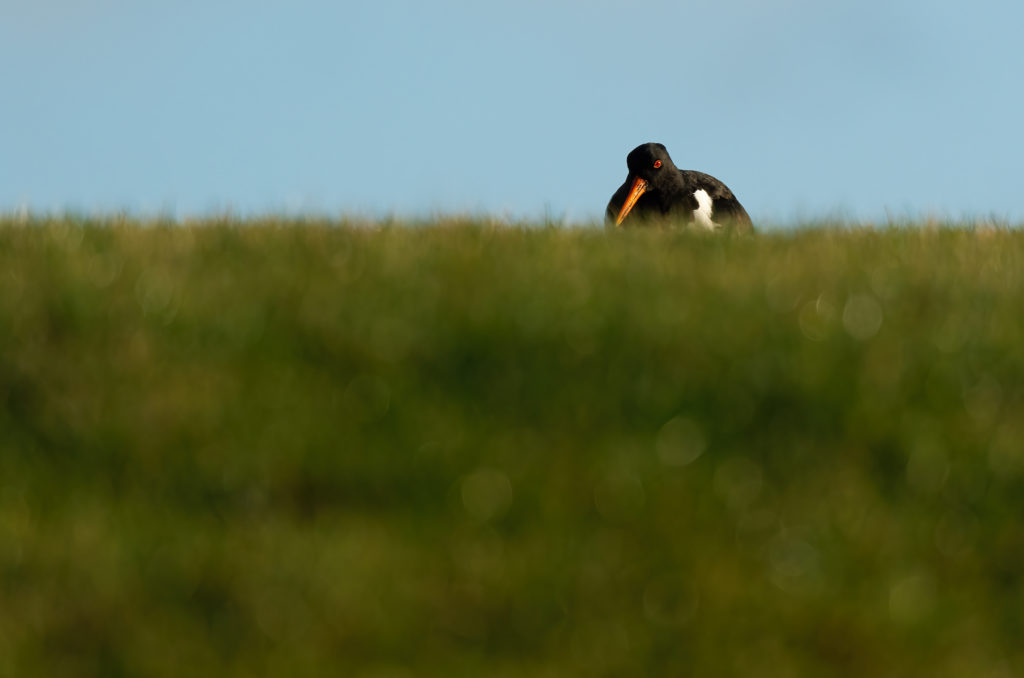
If you enjoy photographing wildlife, you will understand the importance of getting down to the eye level of your subject. The green the oystercatcher in the image above was feeding on is up a small flight of steps from the main esplanade. So, my subject was slightly above my eye level as I stood on the path. There were still a couple of tricky elements to negotiate; making sure I got close enough while avoiding flushing the bird and the strength of the wind gusts that were buffeting my long lens. The effort to hang on to my lens was worth it, with the wet grass sparkling in the out-of-focus foreground and the striking bird standing out against the clean background of the blue sky. It’s a worm’s-eye view.
February – Watching the herring gulls giving it some mussel
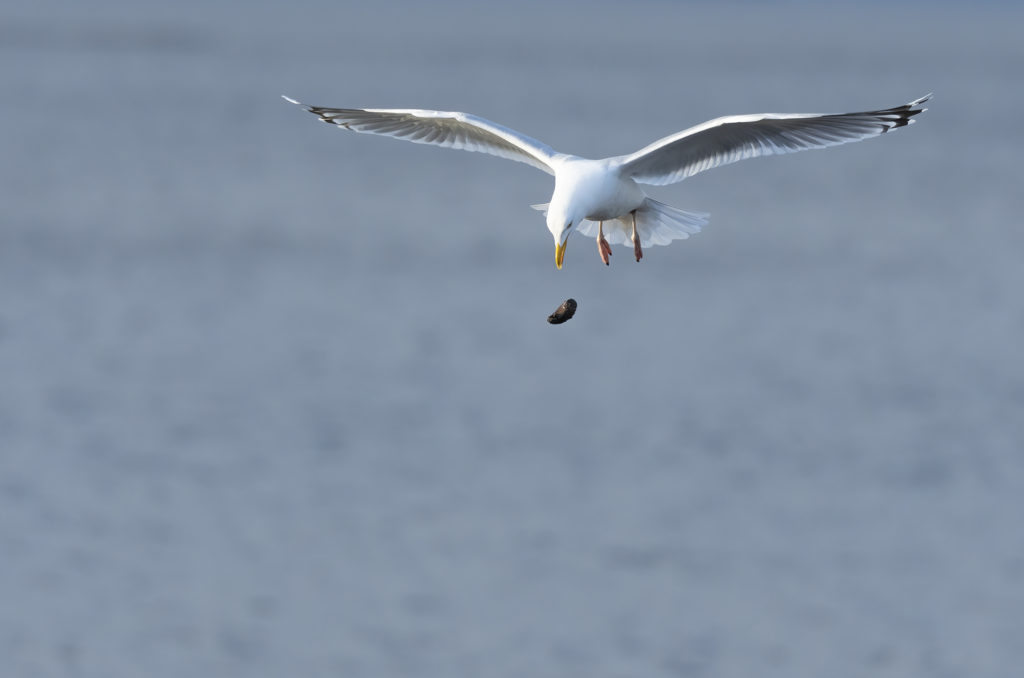
Having spent so much time monitoring the feeding behaviour of the local urban gulls, I was grateful for the opportunity to watch the herring gulls having a more natural diet near Newark Castle. One would pick up a mussel, fly up and drop it on the concrete slipway next to the pier to break it open. Timing was the key to capturing the long-drop technique, and it took several failed attempts before I captured the image above.
March – Feist bites off more than a fox can chew
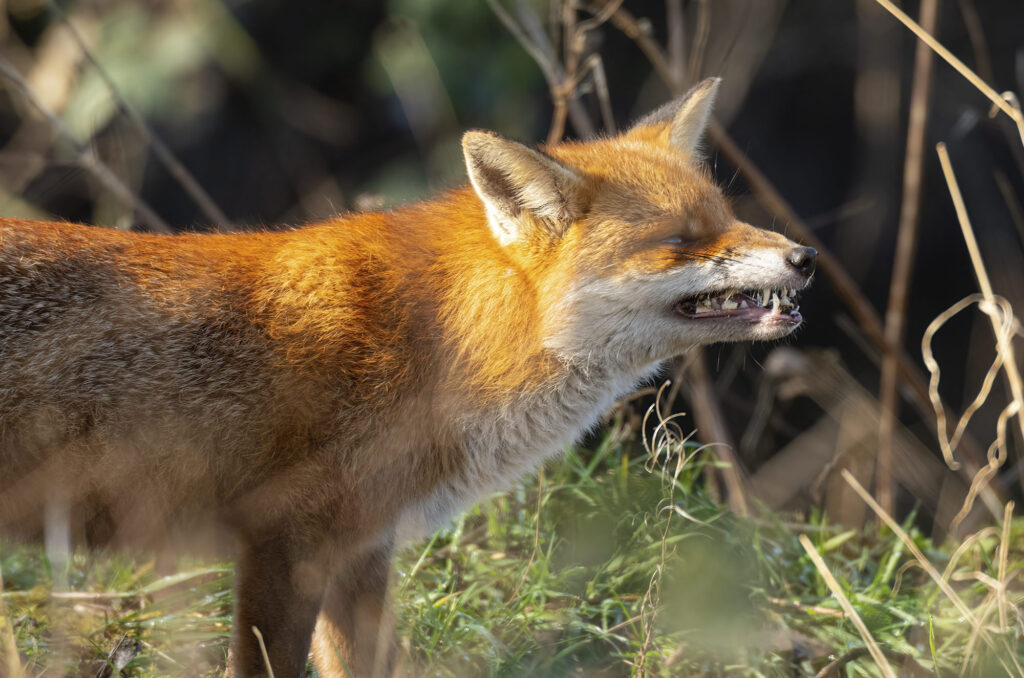
This image represents my closest encounter with the local foxes. This character – who I named Feist – allowed me to tag along and photograph this snack break on the banks of the burn before deciding to trot away into the fields. When it comes to biting off more than you can chew, I thought Feist had got into trouble here. Goodness knows what was getting gobbled up (I couldn’t see at the time and I can’t tell from the images), but it went down eventually…after a fair bit of crunching and grimacing!
April – Getting buzzed by the buzzards
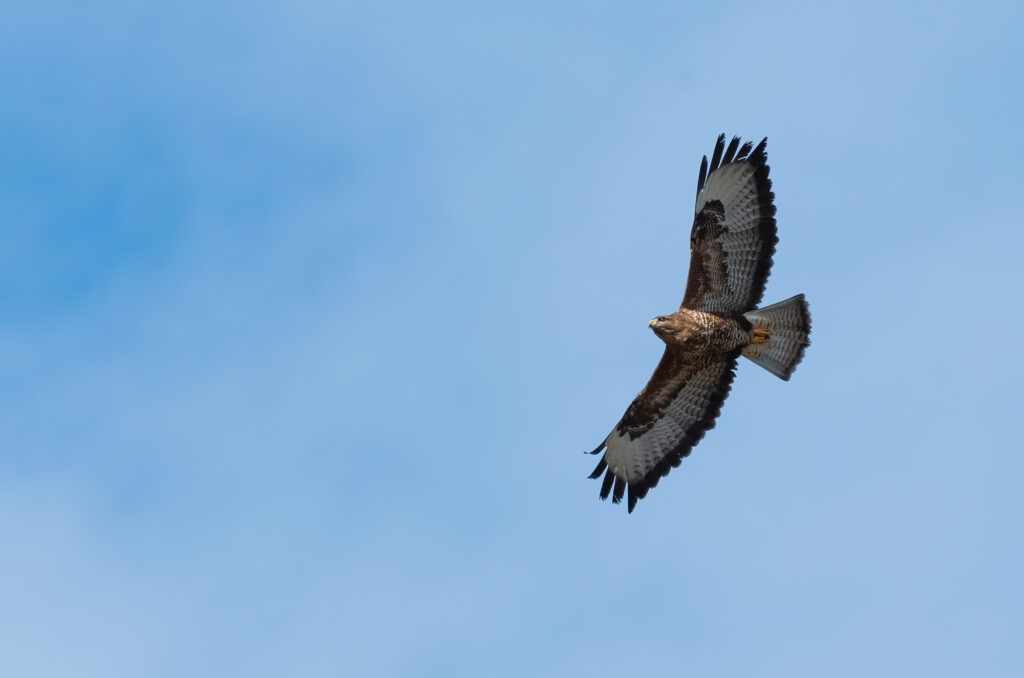
I spend a fair amount of time on my local patch looking skywards and probably an equal amount of time telling people why I spend so much time staring up at the clouds. The answer is always the buzzards. During 2022, I have had more success photographing birds in flight than ever before. As with most things worth doing, practice is key, but I am also confident in using my camera settings to help me get the images I want. In this case, my simple desire was to capture a well-exposed buzzard with plenty of detail. When this individual flew a little lower than usual, I got that image.
May – Enjoying the otterly fantastic moment
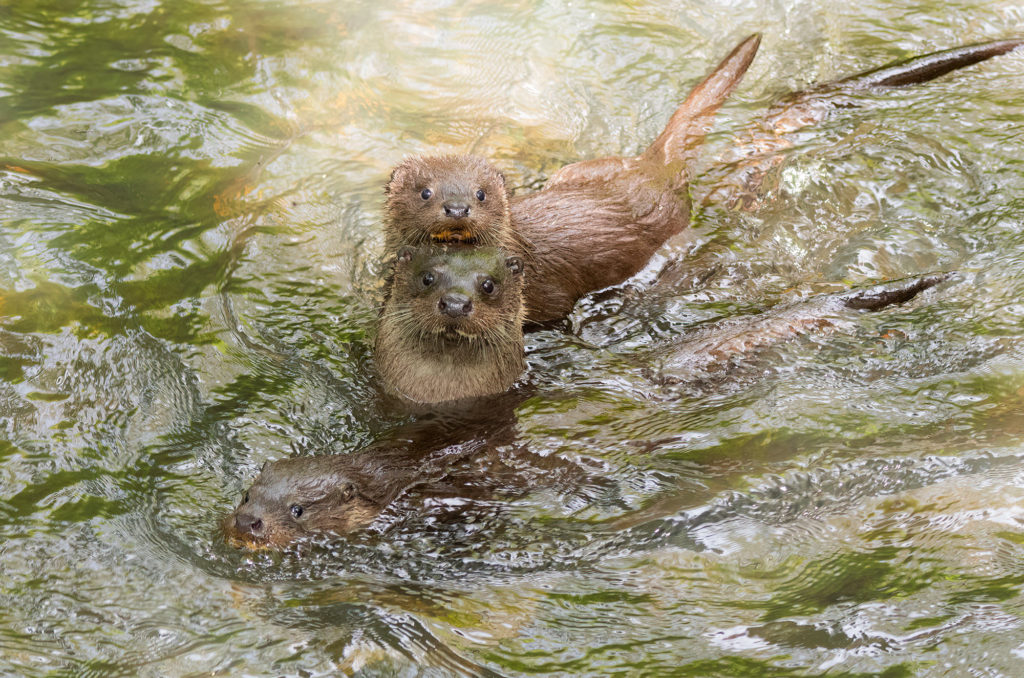
The email from BBC Countryfile magazine was as unexpected as the otter encounter that inspired my entry to the 2022 New Nature Writer of the Year competition. Last year I was shocked to be highly commended; this year, stunned to be a runner-up. To tell you there was an immense amount of skill and fieldcraft in the otter encounter described in my piece and shown in the image above would be a lie. Honestly, I was just absorbing my surroundings while ambling along. This cautious approach – including remaining unmoving and patient when it looked like I had missed the opportunity – was key to getting the images. I avoided spooking the female, so she was relaxed enough to swim up to check me out with her babies in tow. I could have tried to change position, but that could have scared them. It was about enjoying the moment as it was presented to me.
June – Rock pipits pipe up
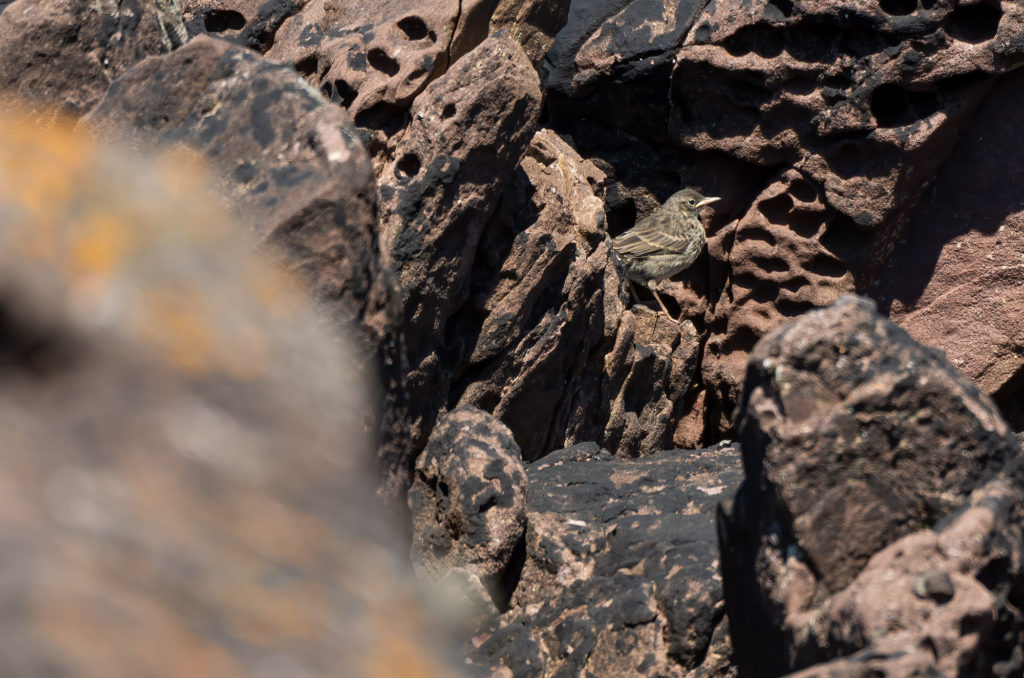
On a walk along the coast in June, it quickly became apparent that rock pipits had fledglings or nests nearby and – having listened to their not-very-subtle warnings – we kept our distance so that they could carry on feeding their young. To avoid distressing the rock pipit parents, I took up a position on a rock a comfortable distance away and began to capture some images of their behaviour. The adults were busily bringing back invertebrate prey for their broods, but I had no idea if they were in the nest or had fledged as it was impossible to see where they were disappearing amongst the rocks. These birds were working incredibly hard – not only to catch food but to keep their young hidden. After a while of watching the parents zooming around while keeping an eye on the rocks for any signs of movement, I discovered this fledgling. As you can see, the young bird in question was well camouflaged and quickly crept back into a crevice.
July – Hanging out with a harbour seal
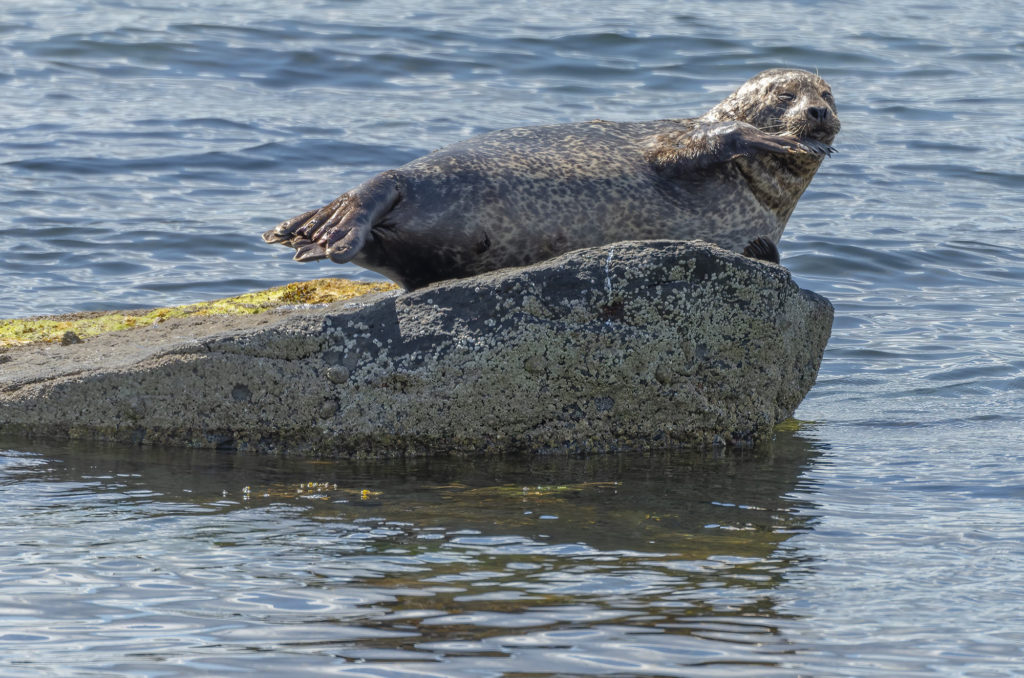
This harbour seal was so close – hauled out on a rock near the shore and easily visible from the coastal path – that I struggled to see him at first. I am not used to this kind of close-up seal. I am more familiar with the faraway blurry blob on the horizon seals. After I had gotten over my initial joy at seeing the seal, I looked at my options for photographing him. We headed down to the beach, sat low on the rocks and kept our distance. Apart from occasionally looking in the direction of where others were standing on the path, the seal remained comfortable, and I managed to capture a variety of sleepy seal poses – including this one.
August – Dragonfly incoming
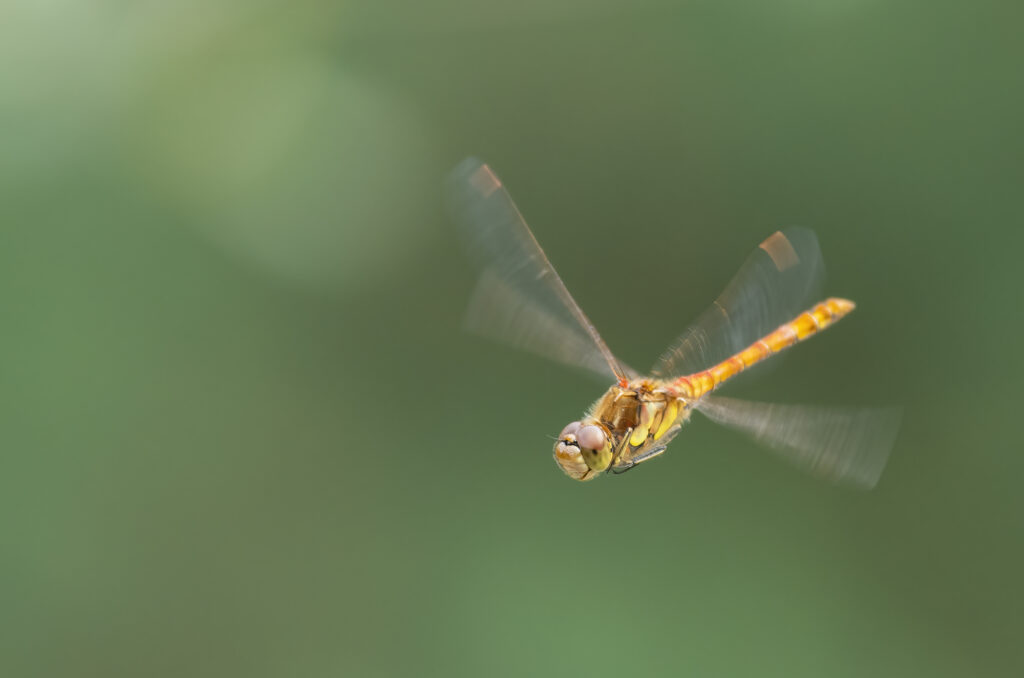
I spent a lot of time watching this common darter dragonfly at Glen Moss wildlife reserve. It kept lifting off from the fence before landing again; cue me desperately trying to react quickly enough to capture it in mid-air. After many blurry, out-of-focus attempts, my patience and persistence finally paid off. I was also treated to one of the dragonflies landing on my hand, which always feels pretty special. Like most of my recent insect photos, this was taken using my 80-400mm lens, which meant I could stand a good distance from this dragonfly. This approach ensures that I am capturing natural behaviour without disturbing my subject.
September – Time with a toadlet
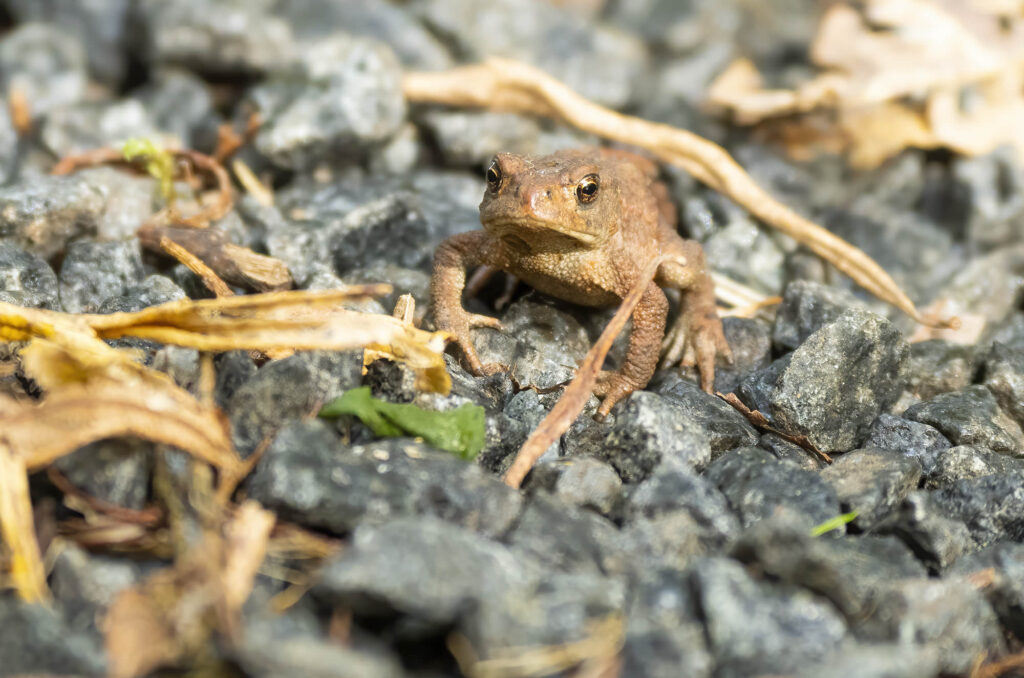
One of my fears is accidentally treading on any living creature. This fear increases in the presence of tiny toadlets, which tend to appear near my feet. This toadlet, photographed at Cathkin Marsh, was a less terrifying prospect. The fact that it was on its own helped, although it was well-camouflaged among the dry leaves. Thanks go to my partner, who spotted it crawling along. I knelt on the chippings and captured a few images, before leaving it to head towards the undergrowth – away from the gaze of the numerous kestrels and buzzards in the area. I hope it got to its destination safe and sound.
October – Much ado from the mute swans
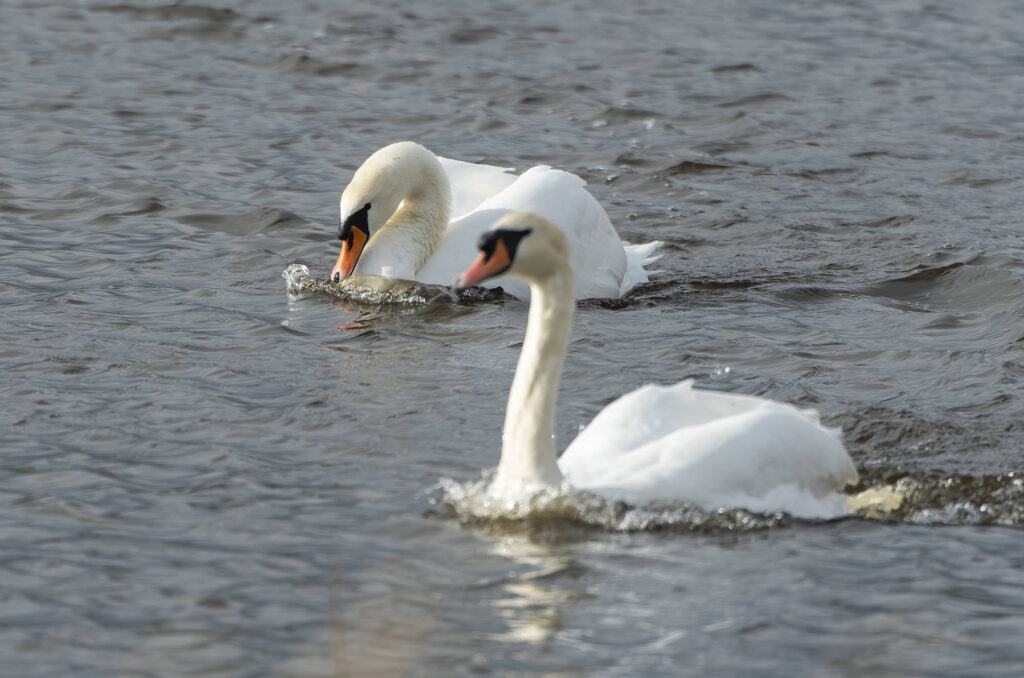
I felt lucky to encounter some unexpected swan behaviour on a walk around a local reservoir. The serene scene – of tufted ducks gently bobbing on the water as the cool breeze rippled the surface – was disturbed by a mix of whipped-up water and wingbeats. The male (or cob) swan – I assume, based on the thickness of its neck – powered through the water, wings arched behind his folded-in neck, which created a menacing bow wave. His target was just ahead of him; another mute swan – slighter but a similar size. The behaviour that followed was like watching a video on repeat. The aggressor built up speed, gliding closer to his target and then launched an attack. Both birds lifted off and flew a short distance while the aggressive male snapped at the victim’s tail feathers and then landed back on the water before they resumed their positions and started the process again. This allowed me plenty of opportunities to capture some of the action, using a fast shutter speed to freeze the water spray as the swans took off and choosing to focus on the aggressor during the pursuits (see image above).
November – Returning to the red squirrels
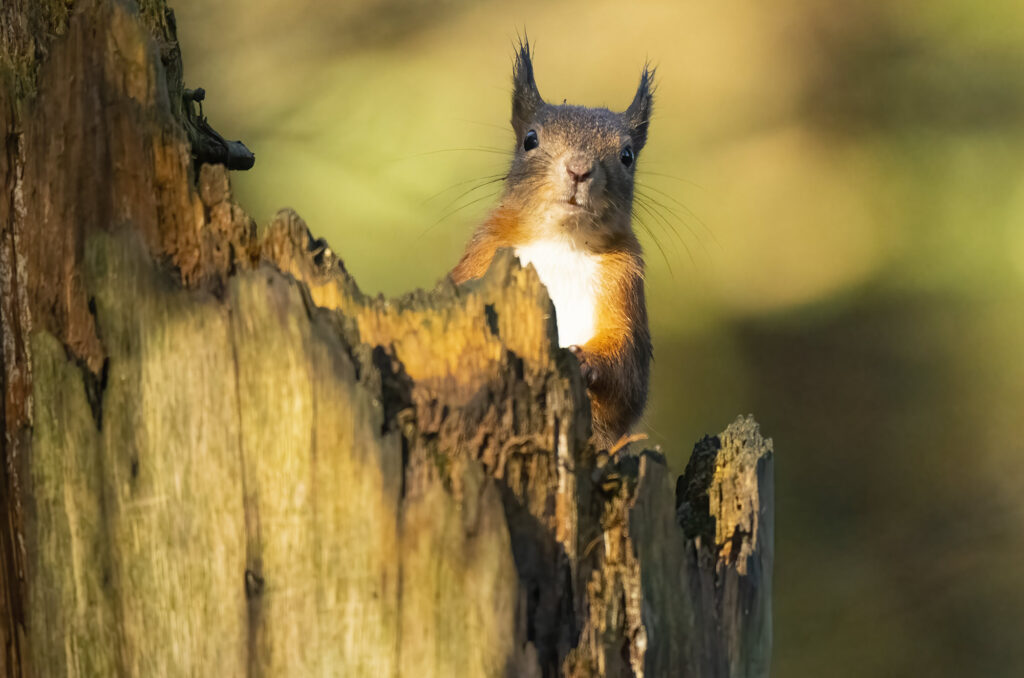
It had been too long since we last visited the woodland hide at Argaty Red Kites. I was excited to spend an extended period with the red squirrels – a species that I rarely have the opportunity to photograph. It was hard to resist the temptation to try to capture everything that unfolded in front of us, but my focused approach paid off. This was an image that I envisaged as soon as we sat down in the hide, but I soon got frustrated as I kept missing the moment. Red squirrels are incredibly quick. You have to be ready for them to appear from nowhere, but I didn’t want to spend the whole session focused on just one spot. I soon started creating other images that I was happy with. Then, minutes before we were due to leave, the late autumn sunlight crept through the trees, and a red squirrel appeared in position. This time I was ready.
December – The gift of deer and ice
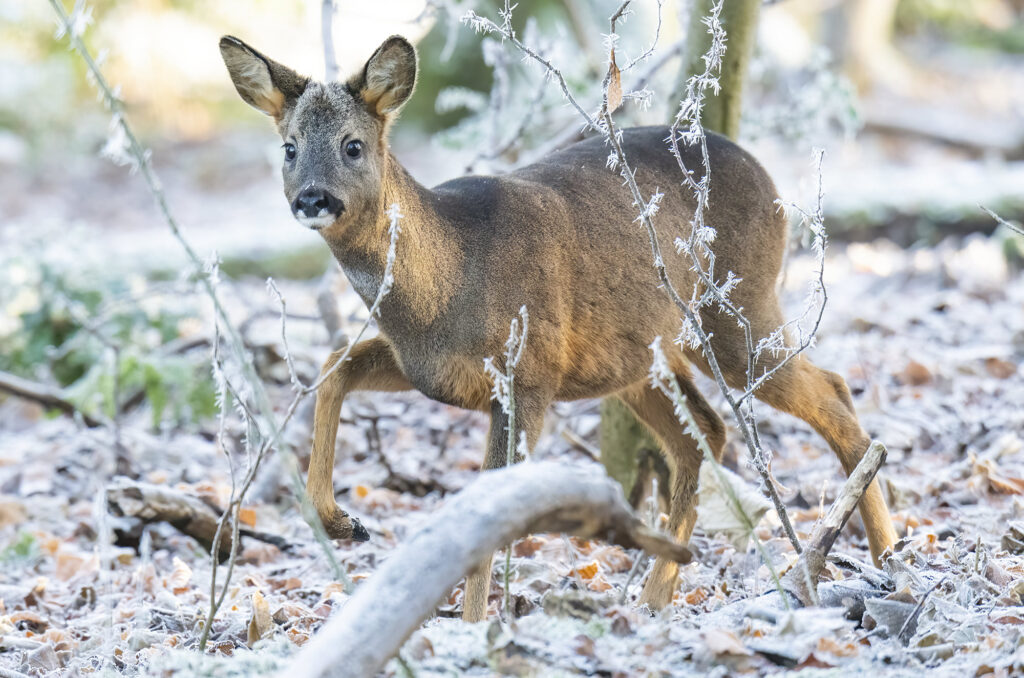
The hoar frost from a couple of weeks ago created ice-encrusted leaves, which provided the perfect background for this young roe buck. Although this guy knows me well, he looks alert in this image. His wariness turned out to be due to other people moving around in the woods nearby. His mother had already run off with her young doe – showing how easily spooked they are. It was pretty impossible to be quiet when moving around due to the crunching of the leaves underfoot, but I was able to continue photographing due to the relationships I have built with these deer since the Spring. I may be noisy sometimes, but they know I am not a threat.
Roll on 2023!

